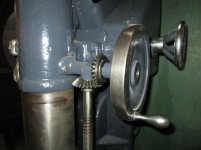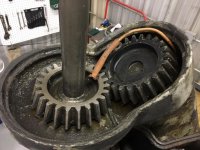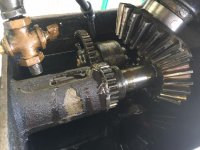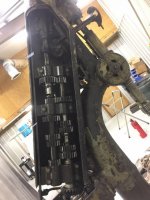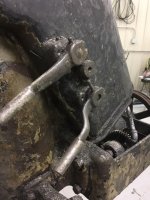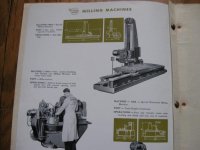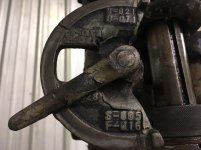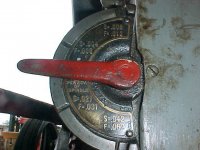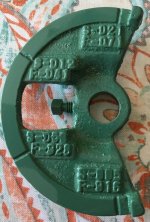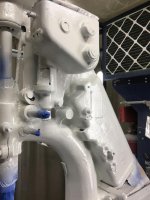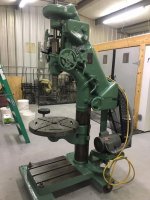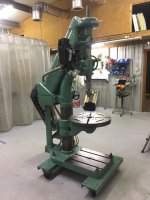Jeff,
Thanks for the extra photos.It is the first time I have seen inside one of these early models and it looks interesting. For example the "self oiled" feature which looks to be an oil pump sending (recirculating) oil to the bearings and gears.
The round column is not itself a reliable indication of age - Barnes Drill were still offering the round column as an option (box or round column) in the 1940's, it allowed the table to swung aside and also rotated.
The attached images show an early model (1912 advert) and also the options of box or round column from a 1940's manual.
I too am concerned about blasting the main body of the machine - it sounds like a disaster waiting to happen in my opinion

. I am sure you will end up with abrasive in the wrong places...there are no seals on those old machines and blasting with compressed air will simply drive the abrasive in further. Compressed air alone can do a lot of damage to old machine tools, it is notorious for driving swarf and grit into spindle bearings and slideways.
Besides, media blasting and repainting is out of date

- nowadays restorers of old machinery are carefully removing layers of paint to uncover the original factory paint. I admit this trend may not yet have widespread support among machine tool restorers....but it will sink in one day I hope. I have recently removed an entire coat of yellow paint from a 1940's Thiel bandsaw to uncover the factory gray finish - much better

.
I am sure the Barnes Drill will look great in new paint too.
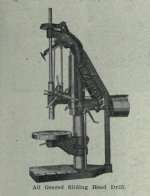

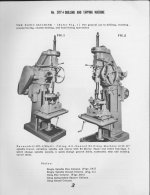
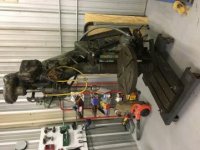






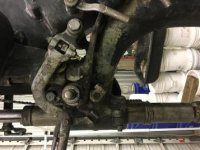

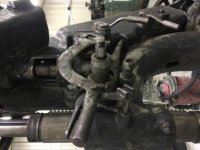


 . I am sure you will end up with abrasive in the wrong places...there are no seals on those old machines and blasting with compressed air will simply drive the abrasive in further. Compressed air alone can do a lot of damage to old machine tools, it is notorious for driving swarf and grit into spindle bearings and slideways.
. I am sure you will end up with abrasive in the wrong places...there are no seals on those old machines and blasting with compressed air will simply drive the abrasive in further. Compressed air alone can do a lot of damage to old machine tools, it is notorious for driving swarf and grit into spindle bearings and slideways. - nowadays restorers of old machinery are carefully removing layers of paint to uncover the original factory paint. I admit this trend may not yet have widespread support among machine tool restorers....but it will sink in one day I hope. I have recently removed an entire coat of yellow paint from a 1940's Thiel bandsaw to uncover the factory gray finish - much better
- nowadays restorers of old machinery are carefully removing layers of paint to uncover the original factory paint. I admit this trend may not yet have widespread support among machine tool restorers....but it will sink in one day I hope. I have recently removed an entire coat of yellow paint from a 1940's Thiel bandsaw to uncover the factory gray finish - much better  .
.




